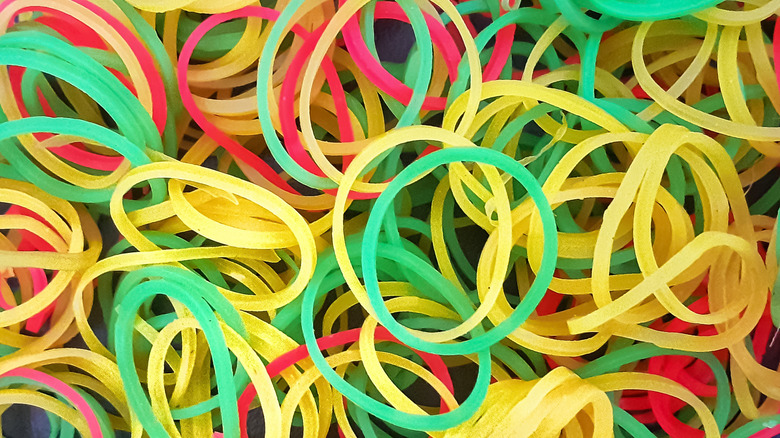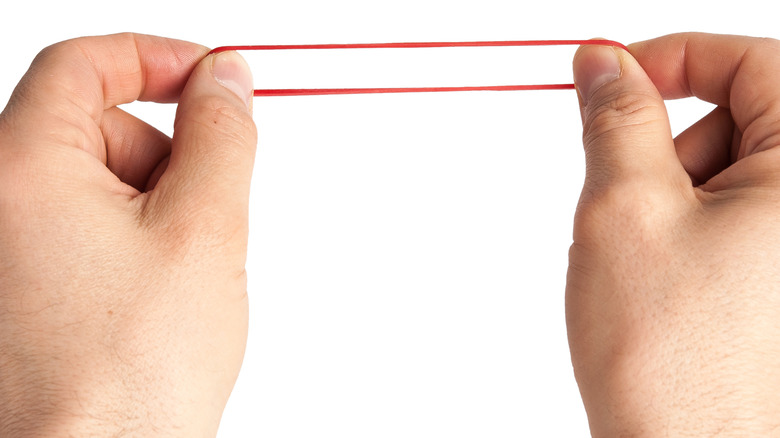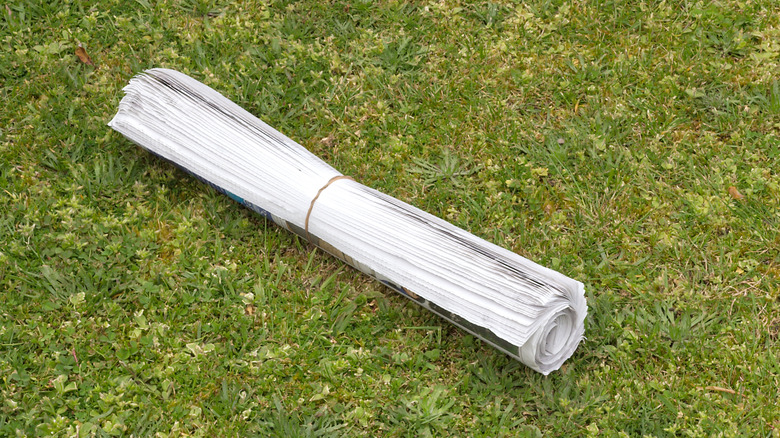The Origin Of The Rubber Band
When you need something to keep things together, one of the first things you might reach for is a rubber band. These little things do a lot for us, but have you ever wondered where they came from? The word "rubber" probably tipped you off to at least part of the origin of these stretchy bands, but there is a lot to their history.
Rubber bands come from rubber. We often think of rubber as a somewhat modern invention, but people making and using a rubber-like substance goes back thousands of years. Evidence from Mexico and Central America suggests that ancient civilizations discovered how to make rubber from sticky fluids in certain plants, including rubber trees. When they mixed the fluids with juice from morning glory plants, they were able to create a somewhat solid, bouncy material. They made balls that were probably used in games and eventually figured out how use the substance to make sandals (via National Geographic).
Rubber bands were first used in factories
Modern-day rubber was a substance that was improved upon over several years by several men, including Charles Goodyear, who discovered vulcanization. Vulcanization produced a more durable product (via ThoughtCo). Stephen Perry, an inventor who owned a manufacturing company in London, was the first person to see the genius in thin bands made from rubber, and he patented the rubber band in 1845. You might not think so by looking at them, but there is a precise science behind how rubber bands are made so they hold up. The Library of Congress explains that standards for rubber bands were created in 1925 by the Department of Commerce and National Bureau of Standards.
Rubber bands were a big hit, and at one time, they were the leading product of the rubber industry. It is estimated that in 1901, around 57 million rubber bands were sold. Rubber bands spawned the creation of other useful items like jar rings and erasers. But the story of the rubber band doesn't end there.
Rubber bands become mainstream
Rubber bands were not common household items in the 1900s. According to the Canadian Broadcasting Corporation (CBC), they were used mainly in factories. But that changed in 1923, when Ohioan William Spencer came up with the idea of cutting inner tubes discarded from the Goodyear Tire Company into thin bands. He tried selling them to supply stores, but no one seemed interested.
Spencer didn't give up on his idea. After seeing loose newspaper pages strewn across lawns on windy days, he was struck with the notion of wrapping them with the bands. He presented his local newspaper, the Akron Beacon Journal, with the idea, and they loved it. He eventually persuaded another newspaper to use them. Spencer went on to convince grocers to bundle up produce with his bands. He established a rubber band factory, which today pumps out 2 million pounds of rubber bands every month (via CBC).


